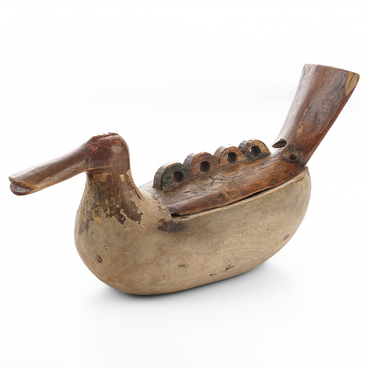The word “kolybel” comes from the Old Russian “kolybat”, which meant “to rock”, “to cradle”. Depending on the region, the cradle in 19th-century Russia was known under different names: a zybka, a lulka, a kachalka, a kalyska, a bayukalka.
A cradle was a necessary item in every peasant family. Its manufacture was entrusted to a craftsman with a kind heart and gold hands. The most common materials for the cradle were bast, reed, pine shingles, and linden bark.
Usually, the cradle was hung in the back of the house near the stove. A ring was driven into the ceiling and a coil of wire was hung on it, on which the cradle was suspended on a rope. It was necessary to rock the cradle carefully to prevent the baby from falling out of it. Sometimes it was entrusted to young girls, just seven or eight years old.
In other regions, the cradle was mounted on a long pole, often made of a flexible birch trunk. The cradle was attached to the lower end of the pole, and its upper end rested against the ceiling beam of the house. A long rope with a loop at the bottom was also attached to the pole, so that the cradle could be comfortably swung by the mother’s foot and her hands were free for work.
There was a good reason for suspending the cradle from the ceiling: the warmest air accumulated there, and people also believed that heavenly forces guarded the baby raised above the floor, so it would grow and amass vital energy.
Such cradles were convenient because the parents could take them to the field or into the forest. While at work, adults that lived in southern regions suspended the cradle on tripods. In northern wooded areas, it was hung on a tree. There was an expression “to raise children on a birch tree”, which meant to hang the cradle on a birch tree when the parents were busy with work.
A mandatory attribute of the cradle was a canopy to protect both from annoying insects and from the evil eye — it was not customary to show the baby to strangers until the age of one. The expectant mother selected fabric for the canopy and decorated it with embroidery, applique, and lace.
The design of the cradle presented in the Museum of Russian Heritage is rather peculiar. It is made of bast. The bone tied to the cradle serves as a baby rattle. By making noise, it had to both scare away evil spirits and entertain the child.


